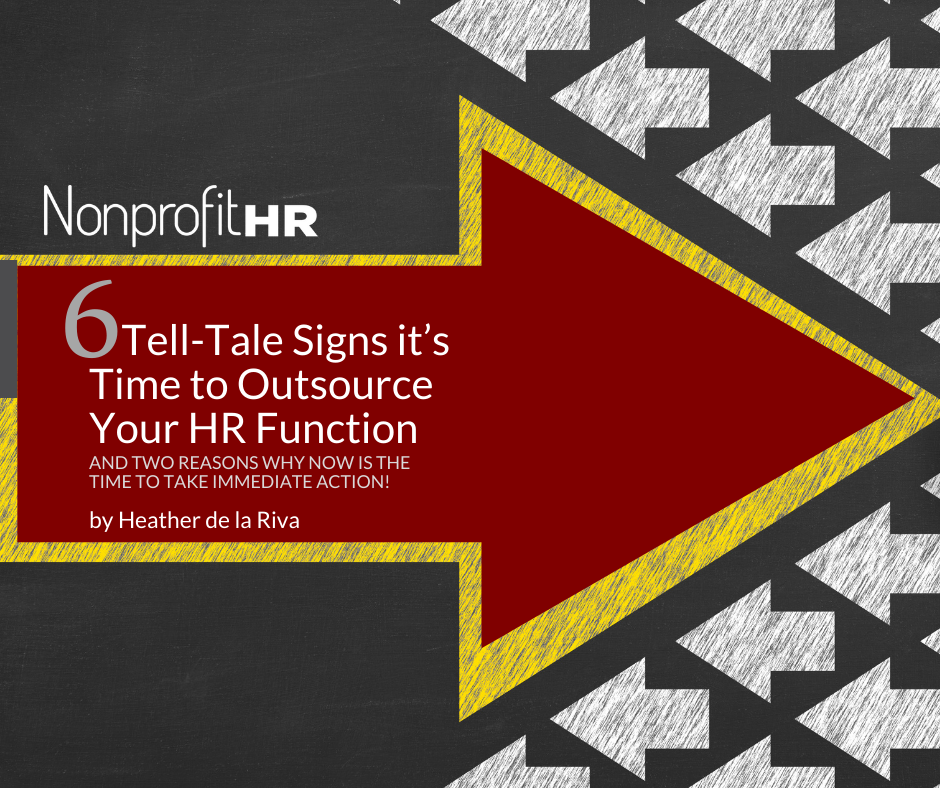WTOP: 5 ways nonprofits can…
With December now underway, most nonprofits are entering the home stretch of the 2016 planning season. Teams are finalizing their budgets, firming up their revenue projections, and mapping out their hiring plans. As they do, many are realizing that 2016 is going to bring a great deal of change to their organizations, especially when it comes to talent, culture and employee engagement.
We’re keeping a close eye on emerging trends as we finish gathering responses for the 2016 Nonprofit Employment Practices Survey, which closes December 18th, and we’re taking note of several shifts that we predict may impact the nonprofit sector in a big way in 2016. Here are just a few:
1. Generational Changes Will Force Nonprofits to Re-Evaluate their Talent and Culture Strategies
The workforce is enduring a major generational shift, and the nonprofit sector is no exception. More than 3.6 million baby boomers are expected to retire over the next year, and millennials are now the dominant generation in the workforce. In fact, nonprofits may feel the effects of this change even more than for-profits as nonprofit employees typically skew older.
But it’s not just aging boomers who are causing generational shifts. The Public Service Loan Forgiveness Program has made it possible for young employees of 501(c)(3) organizations to receive partial forgiveness for their student loan debt in exchange for their nonprofit service, and millennials, who face more school debt than any previous generation, are becoming increasingly interested in nonprofit work thanks to these attractive incentives.
Generational changes will impact all facets of nonprofit organizations in 2016, from management styles to recruitment and employee engagement. Millennials possess a different set of values and expectations than older generations, and forward-thinking organizations are already figuring out how to cater to their unique needs. For example, Second Chance, an organization focused on female homelessness, recently chose to do away with a hierarchical management structure in favor of management “by committee.” They already understand something many organizations still do not: as a rule, millennials feel stifled by corporate hierarchy and prefer flat organizational structures where they can play a role in decisionmaking early in their careers.
And while it may seem like you’re just beginning to understand your millennial employees, believe it or not, the first college graduates from Generation Z are already set to enter the workforce next May. 47 percent of employers admit to being unprepared for Gen Z to stake its claim in the workplace, with many expressing concern over the widened age gap and a disconnect between boomers, millennials and new Gen Z hires. But ready or not, here they come. How will your organization change to engage its growing millennial and Gen Z workforce in 2016?
2. The Hybrid Office Will Become the Expectation, Not the Exception
Nonprofit organizations have traditionally favored a standard office setting comprised of cubicles for the majority of the staff, with a few surrounding offices designated for senior leadership. This environment is set to become a thing of the past in 2016, with millennials (and Generation Z) showing their influence once again. However, rather than shifting to the open-space “Silicon Valley”-style setting that tech companies seem to love, many nonprofits are moving toward hybrid work environments that incorporate elements from both traditional and new age offices. “Collaboration” is one of today’s hottest buzzwords, and with it comes an increased emphasis on smart office design that gives colleagues more flexibility to work together.
Nonprofits like DonorsChoose are beginning to favor offices that feature flexible furniture and a mix of dedicated group workspaces, quiet spaces for individuals, and hotel-style lounges for comfort and relaxation while working. Pallotta TeamWorks, a charity that uses repurposed shipping containers to give each employee the option of a private workspace in their large, open concept office, is embracing the trend as well.
Additionally, thanks at least in part to Apple CEO Tim Cook’s declaration that “sitting is the new cancer,” more offices are providing employees with the ability to partake in physical activity during the workday. Standing desks, treadmill desks and new gadgets like the Wurf Board are populating today’s corporate workspaces, and in 2016, we predict they’ll take nonprofit workplaces by storm as well.
3. New Employment and Benefits Regulations Will Force Nonprofits To Tighten Their Budgets in Other Areas
Under The Affordable Care Act, the employer mandate will go into effect for mid-size nonprofits (those with 50-99 FTEs) in 2016, meaning many nonprofits that did not previously provide health insurance to their employees will either need to begin to do so or will face a fine. Additionally, those who already provide insurance through a health care exchange may face higher expenses in 2016. Some reports indicate that 64 percent of group members in organizations with 51-200 employees will face higher premiums next year, with the average premium increase falling around 18 percent.
But health insurance isn’t the only thing that could strain nonprofit budgets in 2016. New regulations around overtime pay were proposed by the Department of Labor earlier this year under which salaried employees who make less than $50,440 would become eligible for overtime pay in 2016. If these regulations do in fact roll out next year, many organizations will be faced with cutting back their budgets in other areas to afford the expense. In fact, SHRM says this regulation would disproportionately impact nonprofits and service-sector industries.
4. Traditional Performance Reviews Will be Scrapped in Favor of New Performance Management and Engagement Strategies
According to a recent Gallup study, an alarming 87 percent of employees are not engaged in their jobs. This poses a significant problem as Gallup determined in the 1990s that employee engagement is the most important contributor to organizational growth. For-profit companies like Amazon invested heavily in improving their engagement strategies in 2015, instituting an employee feedback system following this incident. In 2016, we expect to see more nonprofits follow suit, but unlike Amazon, we hope they’ll do so proactively rather than on the heels of a crisis.
One engagement and retention strategy that seems poised for wider nonprofit adoption in 2016 is the retirement of traditional annual performance reviews. Rather than providing formal performance evaluations once a year, we predict that more nonprofits will begin to encourage real-time feedback and skills development supported by open and transparent communication between managers and their reports.
The recognition of the need for this change is strong. In 2014, this study from Deloitte found that 58 percent of business and HR leaders believed their current performance management system neither aided employee engagement or improved performance. Global companies like Accenture, Adobe, Cigna and General Electric, all announced changes to their performance management systems in 2015, and your organization could join their ranks in 2015.
5. Nonprofits Will Change their Candidate Screening Processes to Eliminate Hiring Bias
In 2015, some nonprofits began experimenting with a “blind audition” approach to screening job candidates. This approach is intended to help hiring managers avoid giving preference to candidates who share backgrounds similar to their own, and its benefits can be realized from tactics like anonymous resume screening as well.
As fostering diversity and inclusion is likely to become an even higher priority for hiring managers in 2016, we anticipate that more nonprofits will begin to adopt non-traditional screening practices like these in the year ahead. Our hope is that nonprofits will grow increasingly diverse and increasingly more effective at delivering on their missions as a result.
If you’d like to understand how trends like these could impact your nonprofit in the year ahead and benchmark your organization’s current talent and culture practices, there’s still time to participate in our 2016 Nonprofit Employment Practices Survey. This year’s survey can be accessed here and takes just 20 minutes to complete.
Your nonprofit is only as effective as its people, so it’s imperative that you staff your organization for success. But staffing can be a challenge, especially in the face of your nonprofit or trade association’s ever-changing budgets, goals and needs. Check out The Value of Contingent Workforce to learn more about this unique facet of the job market and how you can effectively use it in your organization.
About the Author
Dennis Sawyers, SPHR, SHRM-SCP, Managing Director, Talent Acquisition for Nonprofit HR, brings more than 25 years of human resources experience to the firm. Before joining Nonprofit HR, he held the position of senior human resources manager at Booz Allen Hamilton, providing leadership on the full scope of human resources functions for the entire infrastructure of the firm. Prior to that, he served as director of human resources at Premium Distributors of Virginia and the Maxima Corporation.
Dennis brings significant strength in the broad range of talent management, including recruitment and retention strategy development, performance management and employee development. He has extensive experience across the nonprofit sector, working with organizations in the areas of health and science, housing, social service, arts and education.





























